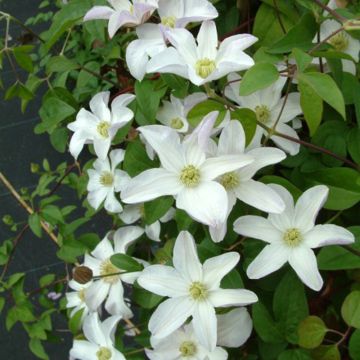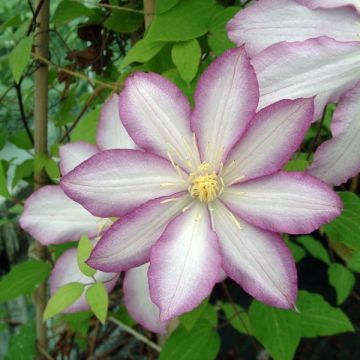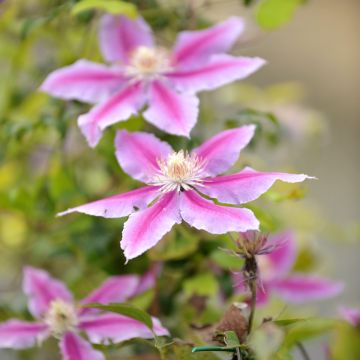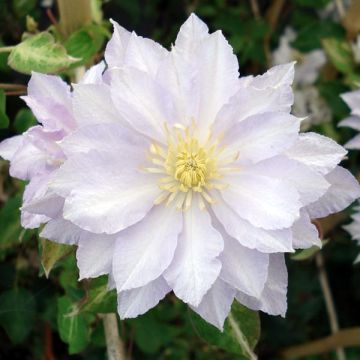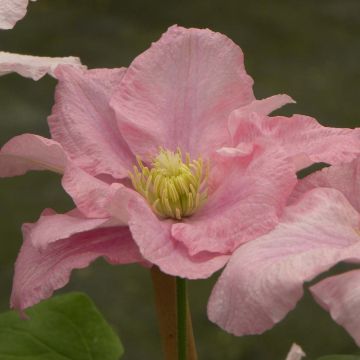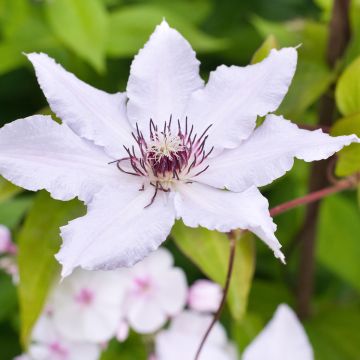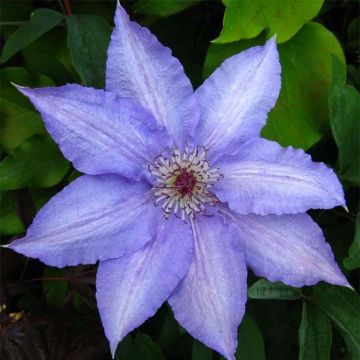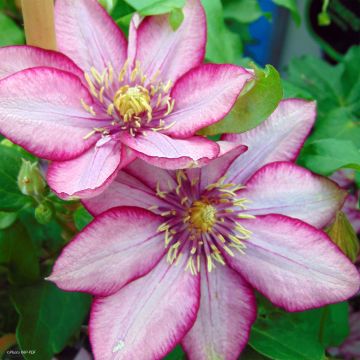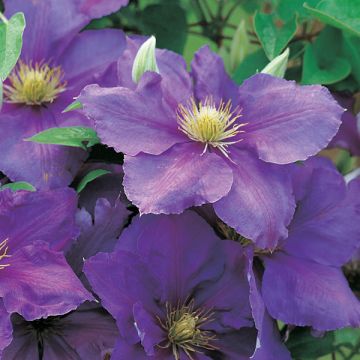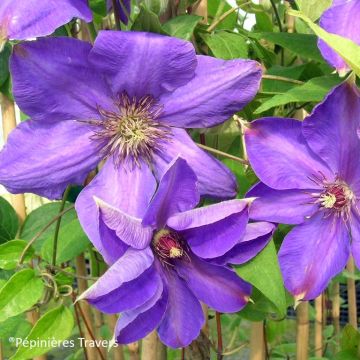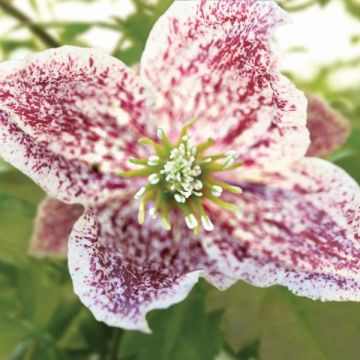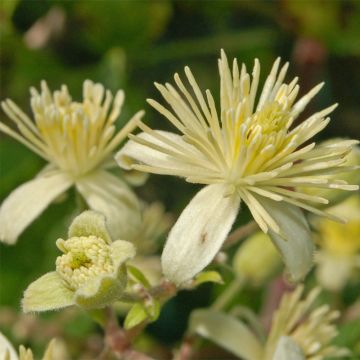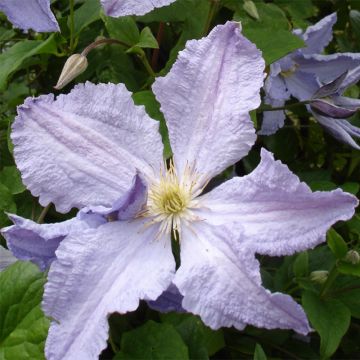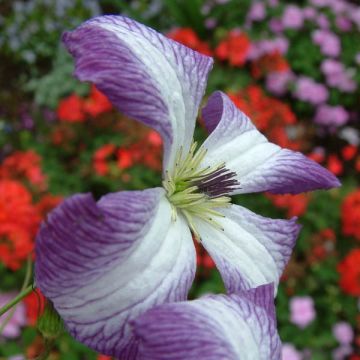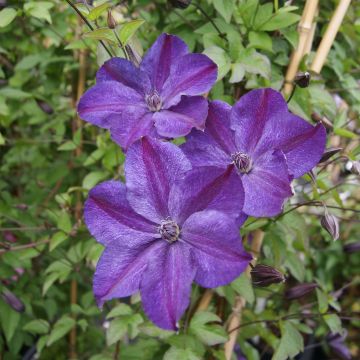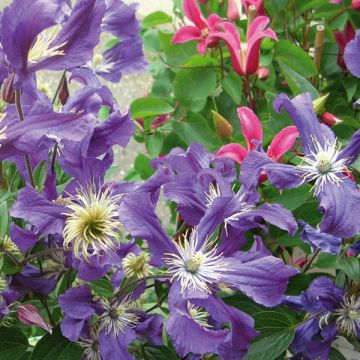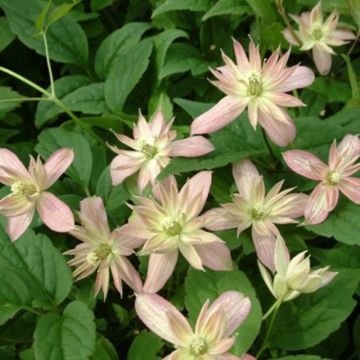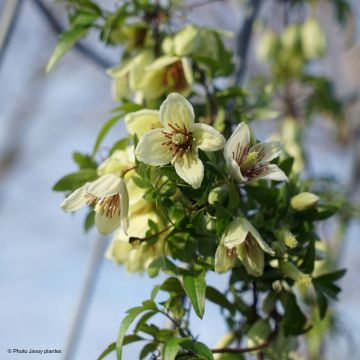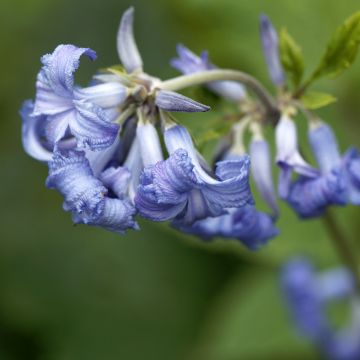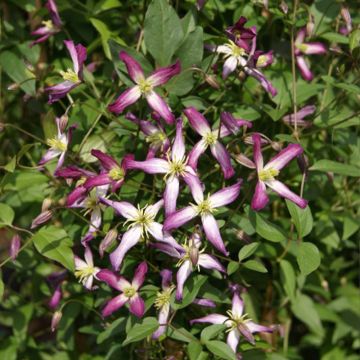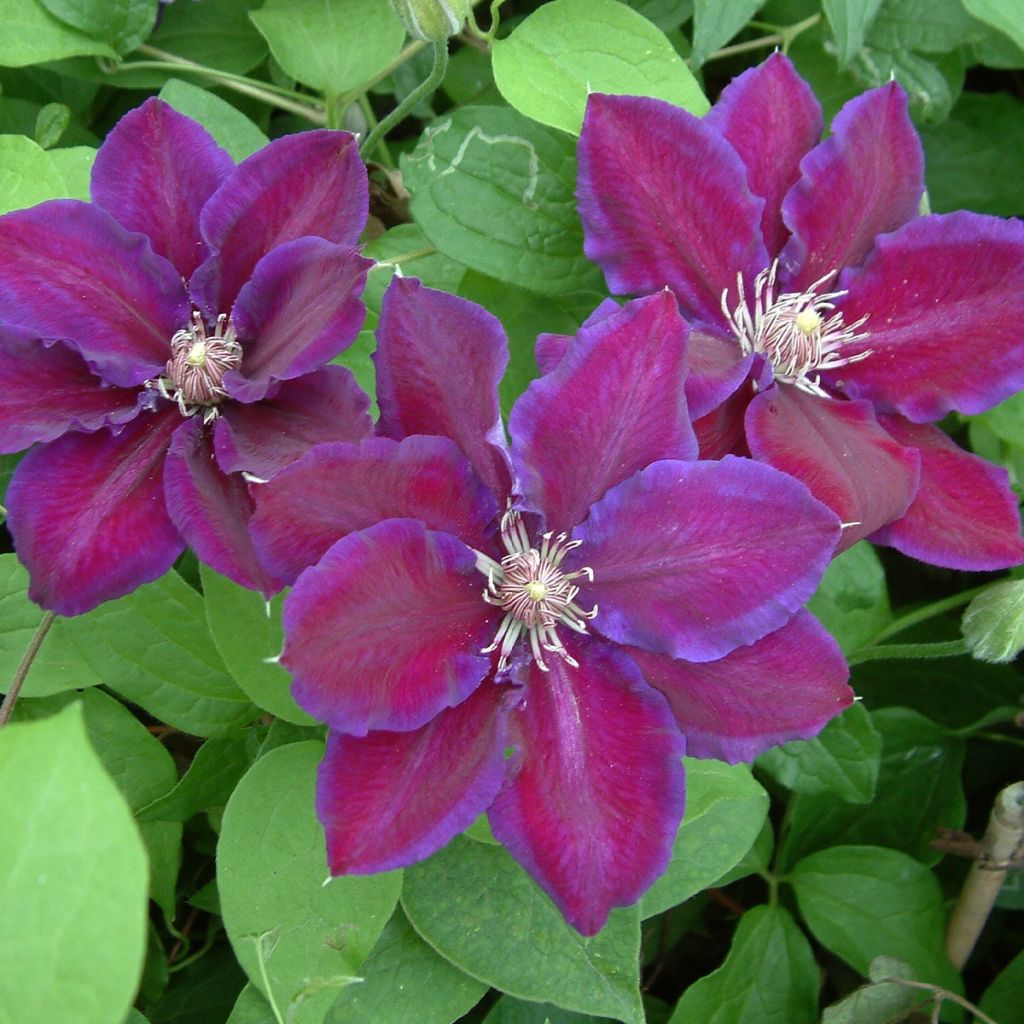

Clematis Julka
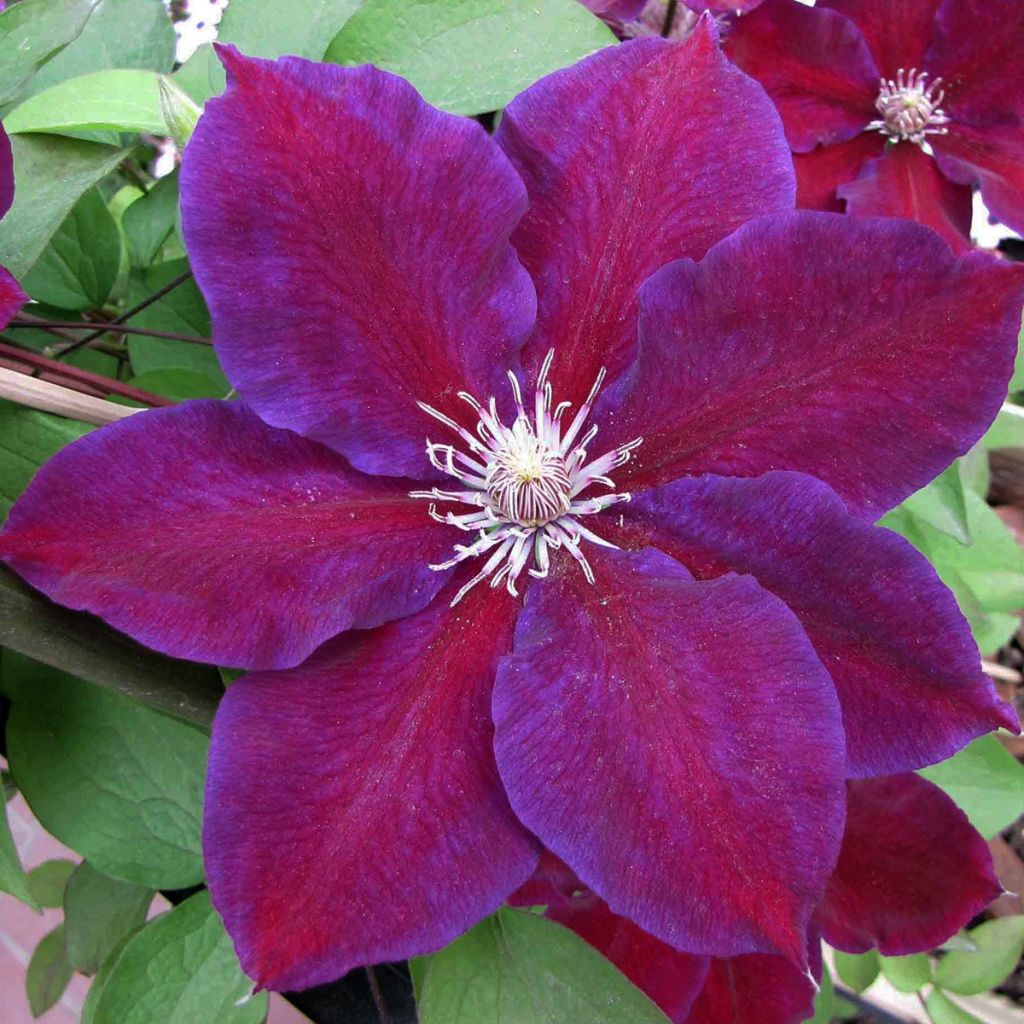

Clematis Julka
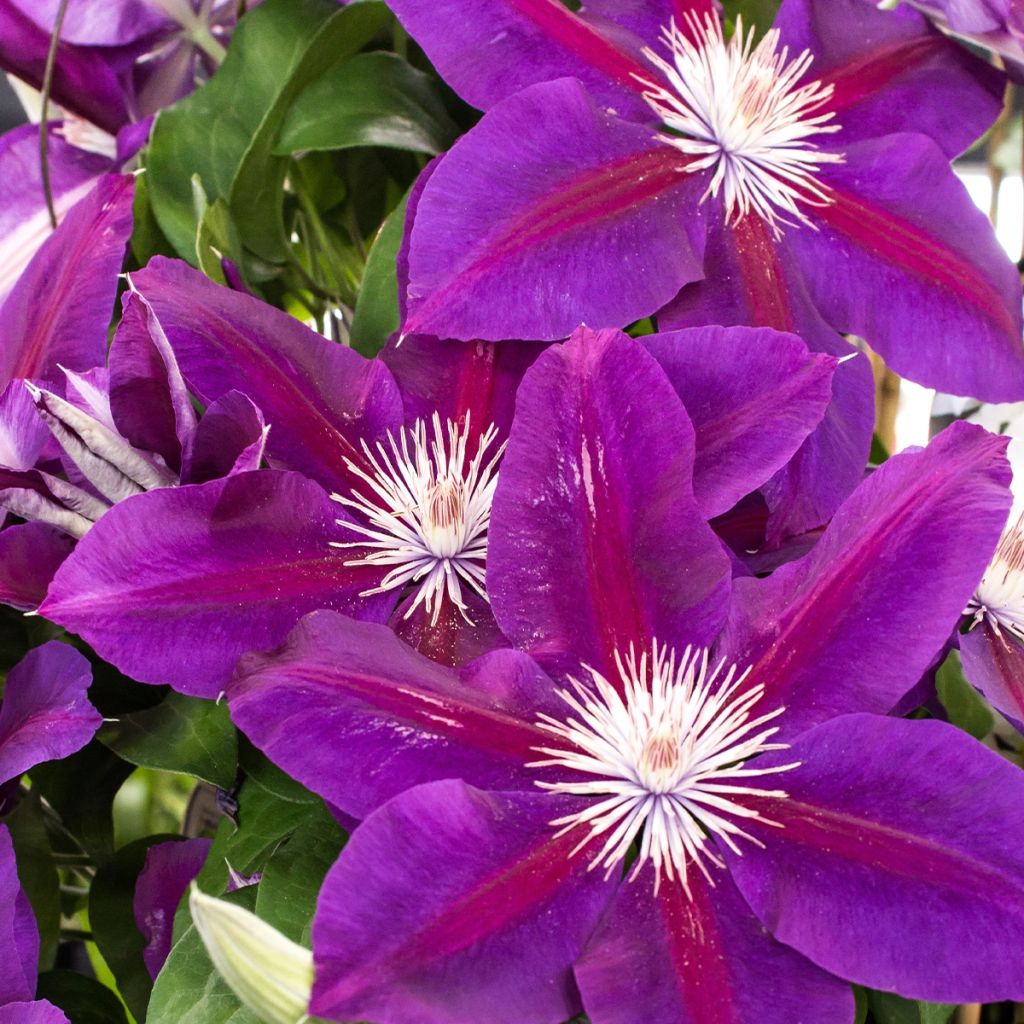

Clematis Julka
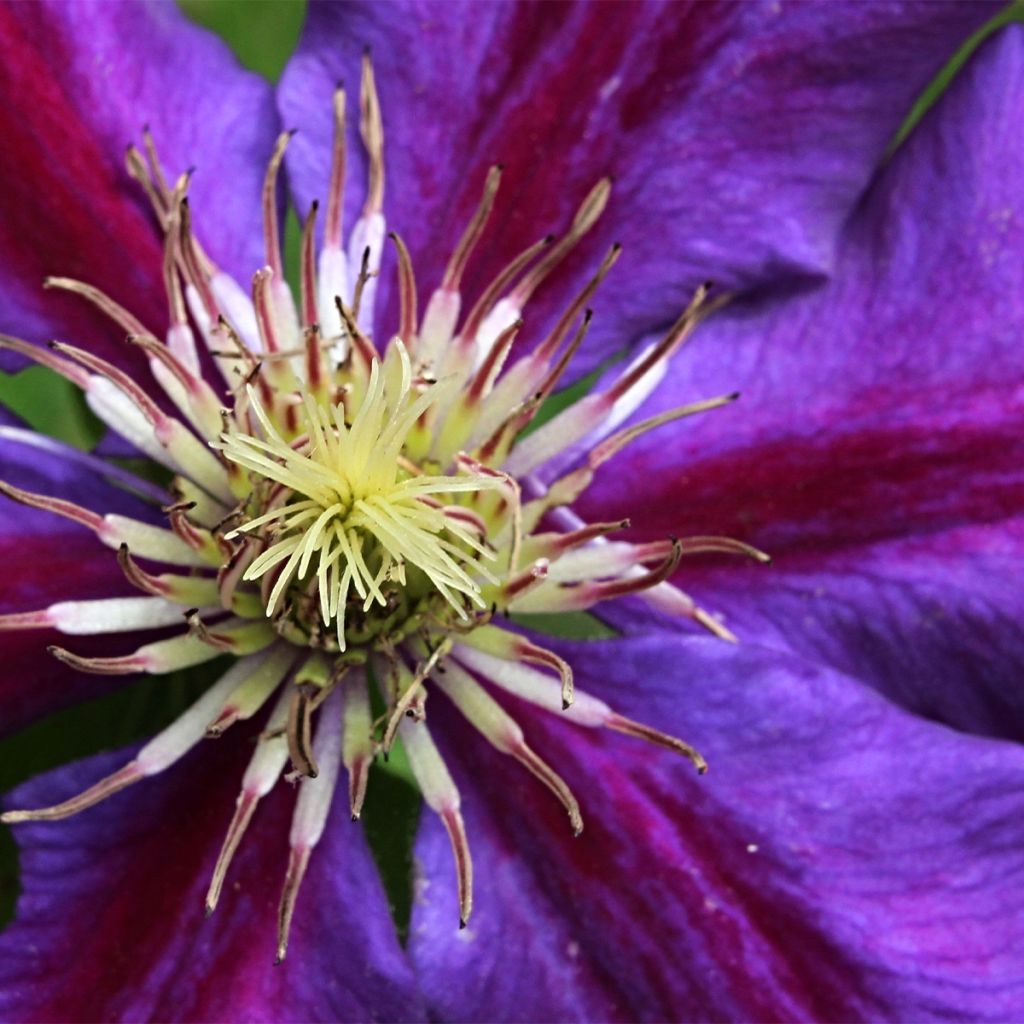

Clematis Julka
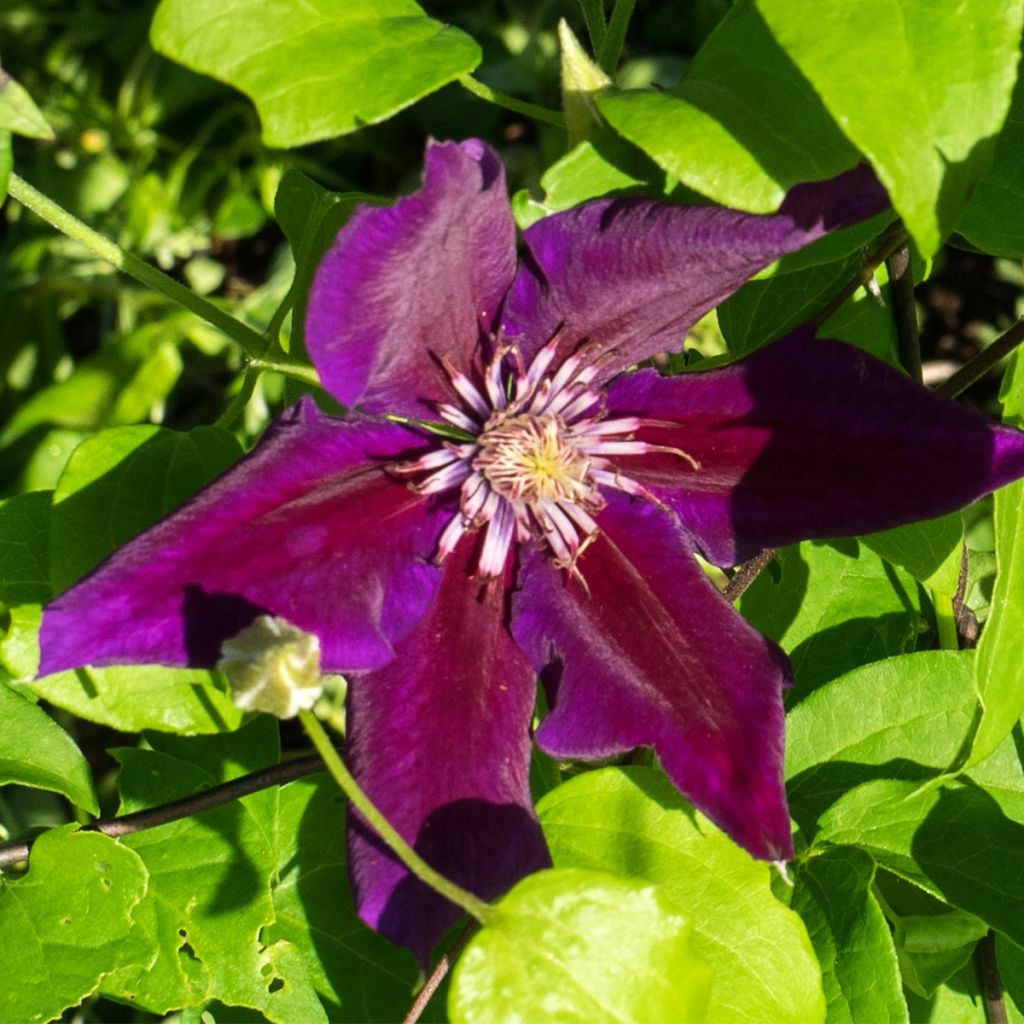

Clematis Julka
Clematis Julka
Clematis patens Julka
Early Large-flowered Clematis
This item cannot be shipped to the selected country
Delivery charge from €5.90
More information
Schedule delivery date,
and select date in basket
This plant carries a 6 months recovery warranty
More information
We guarantee the quality of our plants for a full growing cycle, and will replace at our expense any plant that fails to recover under normal climatic and planting conditions.
From €5.90 for pickup delivery and €6.90 for home delivery
Express home delivery from €8.90.
Does this plant fit my garden?
Set up your Plantfit profile →
Description
Clematis Julka has large single flowers with a velvety texture that enhances its violet colour, highlighted by a purple midrib that catches the eye. They bloom throughout the summer on a compact plant suitable for gardens of all sizes, and containers. This eye-catching variety is perfect for dressing up a fence or a trellis.
The Clematis genus belongs to the ranunculaceae family. 'Julka' is a hybrid obtained in Poland from cross-breeding between Clematis 'Mrs N Thompson' and an unknown variety. It is derived, among others, from Clematis patens, a very hardy clematis native to forests and scrub slopes in Japan, Korea, and northern China. It belongs to the group of clematis that first flower in June-July on the previous year's growth and then re-bloom in August-September, almost without interruption. It is a woody climbing perennial with short stems that will reach about 2.50 m (8ft) high, with a spread of 1 m². The small, medium green leaves, are single or compound with 3 narrow leaflets. The very large rounded flowers have 6 wide, wavy, silky, bright violet petals, crossed by a wide purplish-red band. They are about 12 cm (5in) wide with creamy stamens with yellow anthers at their centre. This clematis clings to its support or host plant with the help of twining stems that have transformed into tendrils. Its deciduous foliage dries up in winter.
Plant clematis alongside your climbing roses or vines to extend the flowering of your walls and pergolas until the end of summer. This is a diverse genus, with varieties available in all colours, shapes, and sizes. Take advantage of their easy cultivation to give your garden a romantic and bohemian touch. The wonderful 'Julka' variety, thanks to its relatively compact size, will fit in a small garden and be perfectly happy in a pot on a balcony or next to an entrance, entwining a small structure. It can be grown with perennial sweet peas (Lathyrus latifolius) or lavender-blue clematis like Blue Angel, for example.
Report an error about the product description
Clematis Julka in pictures
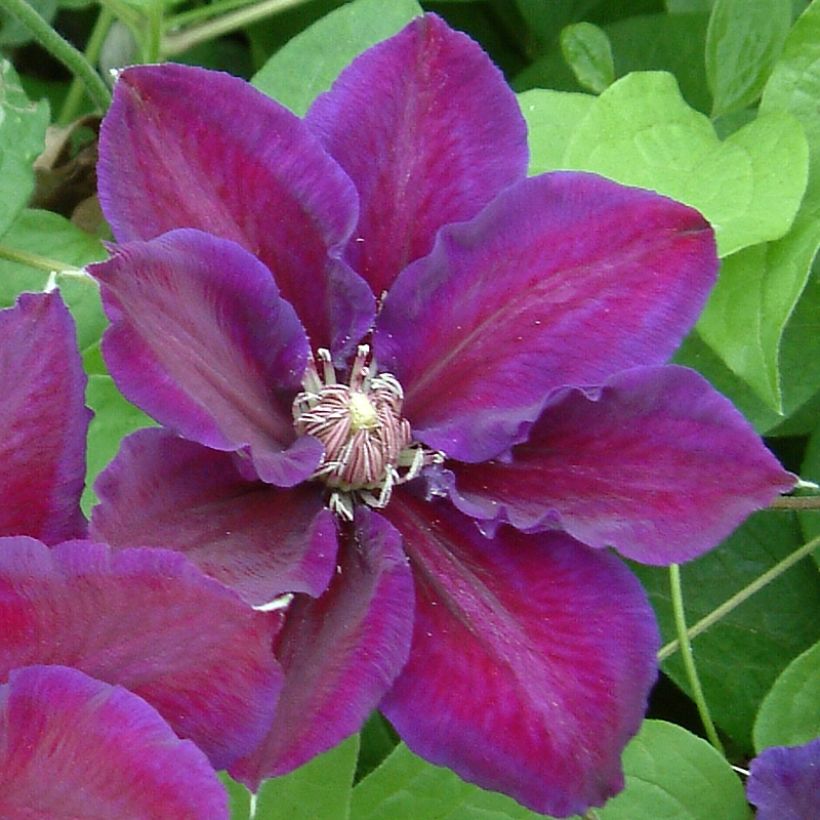

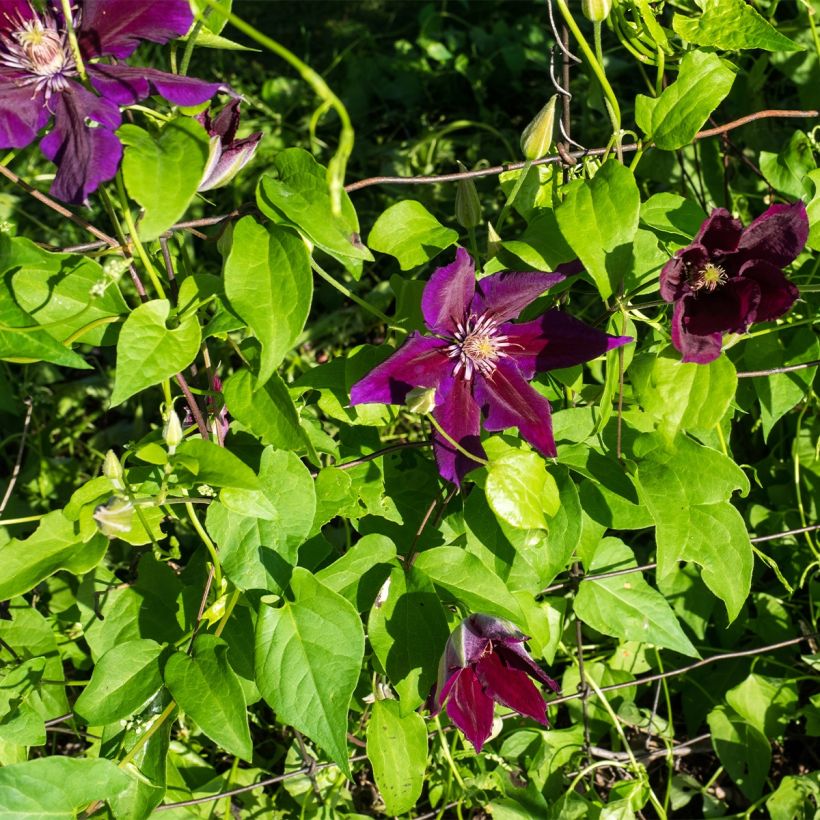

Plant habit
Flowering
Foliage
Botanical data
Clematis
patens
Julka
Ranunculaceae
Early Large-flowered Clematis
Cultivar or hybrid
Other Clematis Patens
Planting and care
Choose a very sunny or semi-shaded exposure. In sunny exposure, shade the base with a ground cover plant or a perennial geranium. Clematis plants like to have their roots in the shade. Plant you clematis by covering the root ball with 3 cm (1in) of soil, in 20 cm (8in) of worked soil, lightened with good potting compost. Water abundantly and regularly during the first few weeks. Clematis plants cling on their own thanks to their tendrils. To promote their growth, provide them with trellis support or help them dress the trunk of a tree by placing a wire mesh. Clematis plants also like to grow freely on neighbouring plants. You can prune it to 50 cm (20in) high. We advise you not to overwater, as stagnant water can cause fungus at the base.
Clematis Julka grows particularly well in pots.
Planting period
Intended location
Care
This item has not been reviewed yet - be the first to leave a review about it.
Clematis
Haven't found what you were looking for?
Hardiness is the lowest winter temperature a plant can endure without suffering serious damage or even dying. However, hardiness is affected by location (a sheltered area, such as a patio), protection (winter cover) and soil type (hardiness is improved by well-drained soil).

Photo Sharing Terms & Conditions
In order to encourage gardeners to interact and share their experiences, Promesse de fleurs offers various media enabling content to be uploaded onto its Site - in particular via the ‘Photo sharing’ module.
The User agrees to refrain from:
- Posting any content that is illegal, prejudicial, insulting, racist, inciteful to hatred, revisionist, contrary to public decency, that infringes on privacy or on the privacy rights of third parties, in particular the publicity rights of persons and goods, intellectual property rights, or the right to privacy.
- Submitting content on behalf of a third party;
- Impersonate the identity of a third party and/or publish any personal information about a third party;
In general, the User undertakes to refrain from any unethical behaviour.
All Content (in particular text, comments, files, images, photos, videos, creative works, etc.), which may be subject to property or intellectual property rights, image or other private rights, shall remain the property of the User, subject to the limited rights granted by the terms of the licence granted by Promesse de fleurs as stated below. Users are at liberty to publish or not to publish such Content on the Site, notably via the ‘Photo Sharing’ facility, and accept that this Content shall be made public and freely accessible, notably on the Internet.
Users further acknowledge, undertake to have ,and guarantee that they hold all necessary rights and permissions to publish such material on the Site, in particular with regard to the legislation in force pertaining to any privacy, property, intellectual property, image, or contractual rights, or rights of any other nature. By publishing such Content on the Site, Users acknowledge accepting full liability as publishers of the Content within the meaning of the law, and grant Promesse de fleurs, free of charge, an inclusive, worldwide licence for the said Content for the entire duration of its publication, including all reproduction, representation, up/downloading, displaying, performing, transmission, and storage rights.
Users also grant permission for their name to be linked to the Content and accept that this link may not always be made available.
By engaging in posting material, Users consent to their Content becoming automatically accessible on the Internet, in particular on other sites and/or blogs and/or web pages of the Promesse de fleurs site, including in particular social pages and the Promesse de fleurs catalogue.
Users may secure the removal of entrusted content free of charge by issuing a simple request via our contact form.
The flowering period indicated on our website applies to countries and regions located in USDA zone 8 (France, the United Kingdom, Ireland, the Netherlands, etc.)
It will vary according to where you live:
- In zones 9 to 10 (Italy, Spain, Greece, etc.), flowering will occur about 2 to 4 weeks earlier.
- In zones 6 to 7 (Germany, Poland, Slovenia, and lower mountainous regions), flowering will be delayed by 2 to 3 weeks.
- In zone 5 (Central Europe, Scandinavia), blooming will be delayed by 3 to 5 weeks.
In temperate climates, pruning of spring-flowering shrubs (forsythia, spireas, etc.) should be done just after flowering.
Pruning of summer-flowering shrubs (Indian Lilac, Perovskia, etc.) can be done in winter or spring.
In cold regions as well as with frost-sensitive plants, avoid pruning too early when severe frosts may still occur.
The planting period indicated on our website applies to countries and regions located in USDA zone 8 (France, United Kingdom, Ireland, Netherlands).
It will vary according to where you live:
- In Mediterranean zones (Marseille, Madrid, Milan, etc.), autumn and winter are the best planting periods.
- In continental zones (Strasbourg, Munich, Vienna, etc.), delay planting by 2 to 3 weeks in spring and bring it forward by 2 to 4 weeks in autumn.
- In mountainous regions (the Alps, Pyrenees, Carpathians, etc.), it is best to plant in late spring (May-June) or late summer (August-September).
The harvesting period indicated on our website applies to countries and regions in USDA zone 8 (France, England, Ireland, the Netherlands).
In colder areas (Scandinavia, Poland, Austria...) fruit and vegetable harvests are likely to be delayed by 3-4 weeks.
In warmer areas (Italy, Spain, Greece, etc.), harvesting will probably take place earlier, depending on weather conditions.
The sowing periods indicated on our website apply to countries and regions within USDA Zone 8 (France, UK, Ireland, Netherlands).
In colder areas (Scandinavia, Poland, Austria...), delay any outdoor sowing by 3-4 weeks, or sow under glass.
In warmer climes (Italy, Spain, Greece, etc.), bring outdoor sowing forward by a few weeks.

































